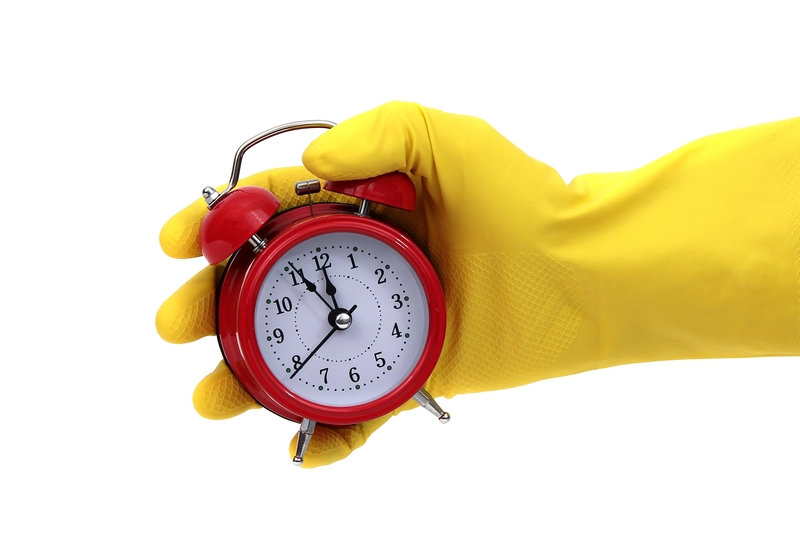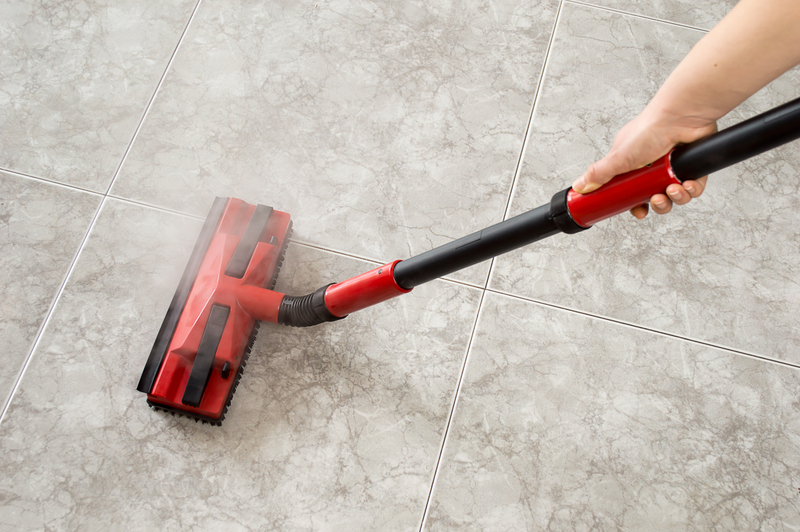Remove Stovetop Burn Marks with Ease
Posted on 26/05/2025
Remove Stovetop Burn Marks with Ease: Complete Guide
If you're tired of unsightly burn marks blemishing your beautiful stovetop, you are not alone. Stovetop burn marks are a common issue in kitchens everywhere, but the good news is they can be removed effortlessly with the right techniques and products. In this comprehensive article, we'll walk you through all the crucial steps, tricks, and expert advice to remove burnt stains from stovetops with ease and restore their sparkling shine. Whether you have a glass, ceramic, electric, or gas stovetop, we have a solution tailored just for you. Let's dive in and reclaim the heart of your kitchen!

Understanding Stovetop Burn Marks: What Causes Them?
Before learning how to easily remove stovetop burn marks, it's important to understand what causes them in the first place. Knowing the culprit helps in selecting the most effective cleaning method and minimizing future occurrences.
- Spills and Splatters: Cooking sauces, oils, and food often spill on the stovetop, especially during intense cooking or frying sessions.
- High Heat Exposure: Cooking at very high temperatures can scorch residual food and liquid, causing tough burn stains.
- Neglected Cleaning: Skipping regular stovetop cleaning allows residues to bake on and become stubborn burn marks over time.
- Incorrect Cookware: Using warped or dirty-bottomed pots and pans can lead to direct scorching.
- Inefficient Ventilation: Poor airflow can concentrate heat on surfaces, intensifying burnt areas.
Identifying Your Stovetop Type
Different stovetops require customized cleaning approaches. Here are the main types and their characteristics:
- Gas Stovetops: Feature burners and removable grates, often made of metal enamel, cast iron, or stainless steel.
- Electric Coil Stovetops: Equipped with raised metal coils and drip pans below them.
- Glass Stovetops: Smooth, continuous surface made of tempered glass, common in modern kitchens.
- Ceramic Stovetops: Similar to glass, sleek but slightly more delicate.
Understanding your stovetop surface is crucial as certain cleaning agents or scrubbing pads can cause scratches on glass or ceramic, while some metal parts can withstand more abrasive products.
Preparation: Gather the Right Cleaning Supplies
Before you remove stovetop burn marks with ease, assemble your cleaning arsenal. Here's what you may need:
- Baking soda - an excellent gentle abrasive
- White vinegar - helps dissolve burnt-on spills and cuts through grease
- Dish soap - for degreasing power
- Non-scratch sponge or microfiber cloth
- Razor blade scraper (for glass / ceramic tops only, used gently!)
- Plastic spatula or old credit card for safe scraping
- Spray bottle (for vinegar or water spray)
- Cleaning gloves
- Lemon juice (natural degreaser and freshener)
- Hydrogen peroxide (for stubborn stains)
- Baking soda paste (combine with water or hydrogen peroxide)
Step-By-Step Guide: How to Remove Burnt Stains on Every Type of Stovetop
1. Basic Cleaning for All Stovetops
- Turn off and cool the stovetop completely before starting.
- Remove grates, knobs, and burners (if applicable).
- Wipe loose debris with a damp cloth or sponge.
- Mix warm water and dish soap; gently scrub the surface to remove light stains.
2. Removing Burn Marks from Glass and Ceramic Stovetops
Glass and ceramic stovetops require special care to avoid scratching:
- Sprinkle baking soda liberally over the burnt stains.
- Spray with vinegar or lay a warm damp microfiber cloth over the area, allowing it to fizz and work for 15-20 minutes.
- Using a soft sponge or cloth, gently scrub in circular motions.
- If stains persist, use a razor blade scraper at a low angle. Gently push the blade without excessive force to avoid damage.
- Wipe away residue, rinse, and dry thoroughly.
3. Removing Burnt Residue from Gas Stovetop Burners & Grates
- Soak grates and burner caps in hot, soapy water for 15-30 minutes.
- Scrub with a nylon brush or non-scratch scouring pad to remove burnt food particles.
- For persistently burnt-on food, create a baking soda paste (baking soda + water or hydrogen peroxide) and apply directly to stains. Let sit, then scrub and rinse again.
- Rinse, dry, and reassemble.
4. Electric Coil Stovetop Burn Mark Removal
- Unplug coils if possible or ensure the stove is off and cool.
- Wipe coils with damp cloth; avoid submerging electrical parts.
- Clean drip pans as you would with gas grates - soak and scrub with baking soda paste.
Proven Home Remedies and Eco-Friendly Burn Mark Removers
Prefer natural cleaning solutions? These home remedies for burnt stovetop stains are not only effective but gentle on your appliances and the environment:
- Lemon juice and baking soda: The citric acid helps break down grease, while baking soda lifts burnt residue.
- Vinegar and salt: A powerful combo for both cleaning and disinfecting while removing burned-on spots with ease.
- Hydrogen peroxide and baking soda paste: Apply to stubborn burn marks, let sit for 10-15 minutes, and wipe off for a sparkling surface.
How to Use Baking Soda and Vinegar Safely
- Baking soda is slightly abrasive but non-scratching - ideal for glass and ceramic surfaces.
- After sprinkling baking soda on burnt stains, pouring a little white vinegar causes fizzing, which helps lift grime.
- Avoid using steel wool or highly abrasive pads on delicate stovetop surfaces, as they may leave permanent scratches or haze.
Commercial Cleaners: When Home Remedies Aren't Enough
Sometimes, burnt marks simply won't budge with home remedies. In that case, seek out commercial stovetop burnout removers designed for your specific stovetop type:
- Ceramic and Glass Stove Cleaners: Find specialized creams like Cerama Bryte or Weiman that lift burned residue safely.
- Cooktop Cleaning Pads: Designed to avoid scratches, these add extra muscle for stubborn stains.
- Degreasers: For heavy-duty spills, kitchen degreasers effectively cut through thick burnt-on messes, especially on metal components.
Always read the manufacturer's instructions and test any product on a small inconspicuous area before full application.
Tips to Prevent Stovetop Burn Marks in the Future
Prevention is always easier than cure. Here's how you can minimize the chance of burn stains:
- Clean up spills immediately after cooking.
- Use appropriate cookware with flat, clean bottoms to distribute heat evenly.
- Cook on moderate heat when possible to reduce scorching.
- Wipe the stovetop daily with a damp cloth and mild detergent.
- Avoid dragging pans across the stovetop to prevent scratches and burn spots.

FAQs: Remove Stovetop Burn Marks with Ease
Can I use magic eraser to remove stovetop burn marks?
Magic Erasers can be effective on some glass and ceramic stovetops, but use them lightly to avoid micro-scratches. Test in a small spot before widespread use.
What is the best way to remove burnt stains from a stainless steel stove?
Apply a paste of baking soda and water, gently rub with a microfiber cloth, and rinse. For extra shine, finish with a drop of olive oil buffed onto the surface.
Are there stovetop burn marks that can't be removed?
Very deep or old stains can sometimes leave permanent discolorations. If home remedies and commercial products fail, consult your stovetop's manufacturer for further guidance or consider professional cleaning, especially for high-end glass cooktops.
The Takeaway: Enjoy a Spotless, Shiny Stovetop
Burn marks on your stovetop don't have to be a permanent eyesore. With the methods outlined above, you can remove stovetop burn marks with ease--regardless of whether you're dealing with a glass, ceramic, gas, or electric stovetop. Remember to use gentle cleaning techniques, read product instructions, and clean up spills quickly to prevent future burnt stains.
Your kitchen is the heart of your home--keep it looking brilliant by making burn mark removal a regular part of your routine. For more home care tips and stovetop maintenance guides, stay tuned to our blog and never let stubborn stains dim the shine of your culinary space again!



